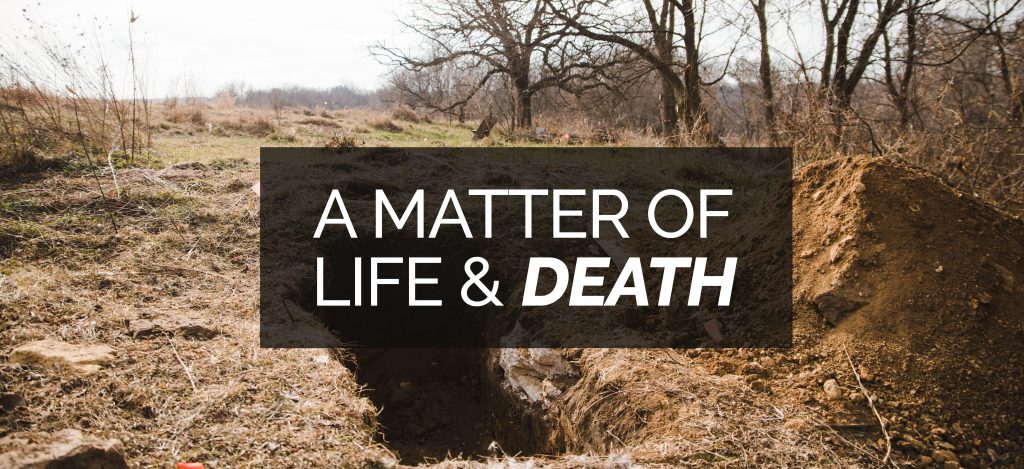
 Death gives Shantell Riley life.
Death gives Shantell Riley life.
Riley, a registered nurse, started her journey into the world of death work by hosting death cafes. She wanted to create a space for others to talk openly about the end of life, and she hosted her first death cafe in June 2018.
Death cafes aren’t physical locations, but temporary events where attendees meet to discuss death and dying. Topics range from planning funeral and burial proceedings to completing advance care directives, the plans made for dealing with end-of-life illnesses, ailments and wishes for treatment, and whether or not there is an afterlife. Tea and cake are staples at the cafes. Riley encourages the curious to “come for the cake, stay for the conversation.”
“To be able to provide the opportunity for people to come and talk about something that is not typical — it’s a taboo topic — but to break down that stigma is the goal of it,” Riley says. “The underlying mission [of the] death cafe is once we all accept and are aware that we’re going to die, what are you going to do with the time you have left?”
Jon Underwood started the modern death cafe movement in 2011 after reading about cafe mortels, events in Switzerland that were pioneered by Bernard Crettaz, a sociologist, in 2004.
Underwood quit his job as a strategy and business development director for a London borough council and held the first death cafe in the basement of his home, modeling the structure on the cafe mortels. He discovered the philosophical discussions about death were less about dying and more about living positively and fully.
The movement spread around the world. So far, more than 7,300 death cafes have been hosted in more than 60 countries. Underwood’s mother and sister, Susan Barsky Reid and Jools Barsky, have run the death cafe website and business since he died in June 2017.
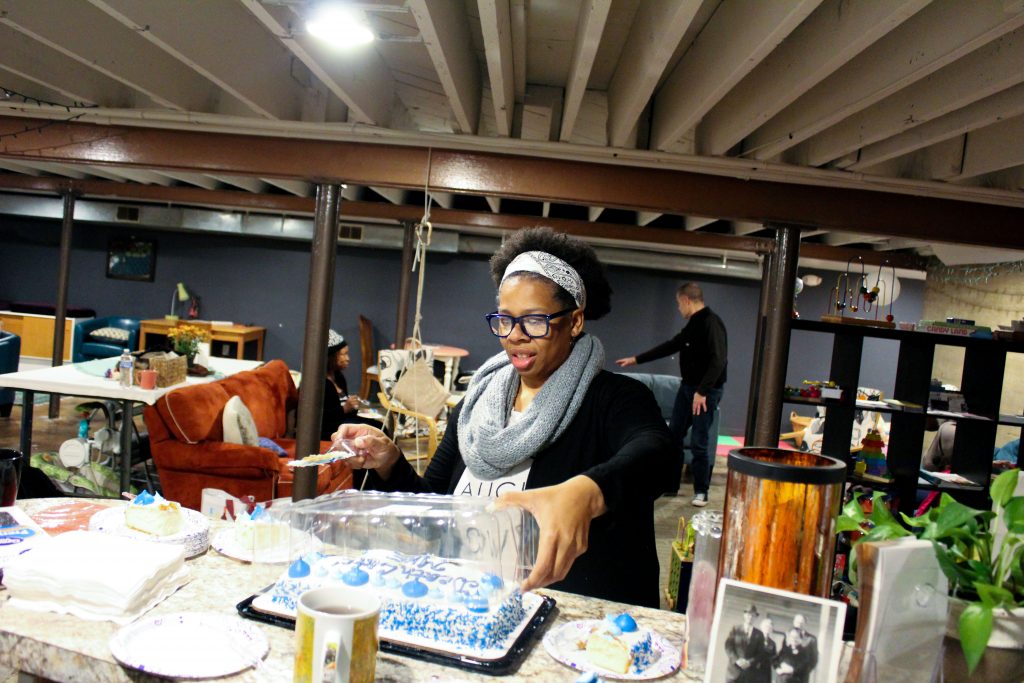
“I really would like people to be uncomfortably comfortable talking about death,” Riley says. “Sometimes we want to talk about it, but we don’t know how to talk about it or who to talk about it with … Death cafe brings you [into] a group of people who actually want to talk about it.”
Riley decided to host a death cafe after experiencing several deaths in her immediate family. In 2009, her mother died unexpectedly after suffering a stroke.
“I went to work Saturday morning thinking I was going to see her Saturday evening,” Riley says. “And Sunday we were being asked what were we going to do.”
Riley and her sisters had also cared for their grandmother, who had dementia, before she died in 2017 at age 90.
“That’s a whole different process when you’re dealing with a loss, and you’re losing someone before they’re physically gone.”
Riley’s grandmother was vocal about her end-of-life plans. She prepaid for her burial plot next to her husband, organized her life insurance and legal documents, and kept a dialogue going about her wishes.
“‘We all have to pay that debt one day’ is what she used to say,” Riley recalls. “When she did, we were able to bring her home on hospice. For her, she earned that right. That was the last thing that we could give her is to allow her to be able to die at home around the people that love her.”
But Riley endured her greatest loss in 2016 when her son Jevontese was murdered.
Jevontese was shot by a friend’s father while helping to break up a domestic altercation between the man and his girlfriend. The man got a gun and started firing.“To lose a child was something you really can’t put on a level for everybody to understand unless you’ve experienced that type of loss,” Riley says. “I went through a process of totally being broken down to almost nothing, and having the opportunity to actually rebuild myself. It really
truly was a rebuilding of myself and how I looked at life, and [I had] to embrace life because it’s all we have.”
Riley set out to encourage others to talk about death. In her own family, Riley talks to her children about their end-of-life wishes now that she’s experienced the loss of one. Having plans lessens the burden of handling the technicalities and logistics of death, and allows more time to grieve, she says.
“For me, my grief process was paused until I actually buried my son.”
She describes herself as a death-oriented Oprah with her family. “I said, ‘If you don’t tell me what you want, you’re gonna get cremated.’ You get a cremation! You get a cremation! Everybody gets cremation!”
But her conversations about death and end-of-life planning aren’t limited to family and death cafe attendees. She works to make everyone more open to embracing mortality. Once at a dinner, she was having a conversation about the value of advance directives when one man stopped her and described the talk as “heavy.”“I was like, ‘Yeah, it could be, but it could be a lot heavier if you’re the one having to make the decisions for someone, and you’ve never had this conversation.’ That’s heavy,” she says.
Riley says that people fear having the important conversations because it makes them recognize their mortality, and she acknowledges the conversations can be challenging. But she wants to ensure people are “informed consumers about their death.”
“I’ve talked about death a whole bunch over the past several months, and I’m having a conversation with you right now,” Riley says. “Does talking about sex automatically make you pregnant? No. So then that means that talking about death will not automatically make you die, either.”The small groups at her death cafes facilitate intimate and open dialogue that’s “not all morbid,” she says. And, it has allowed her to build a network of information and resources. She met a woman at the first cafe she hosted who’s passionate about ensuring people know their rights to green funerals and burials. The two take pictures together on their morning walks and use #DeathBroughtUsTogether on social media.
Riley emphasizes the nonjudgmental environment of the death cafes. She starts every death cafe by asking participants one question: What is your relationship with death? She believes others’ relationships with death dictate their perceptions of death and dying, and open, yet vulnerable, conversation helps them to work though the different layers of the end of life.
“It’s your experience; it’s your thoughts; you should be able to be allowed to have space and to share those thoughts and emotions without someone saying, ‘You should not be fearful of death,’” Riley says. “No. I understand. It is legit to be fearful of death. Nobody knows … Which is part of the reason why we’re driven by the fear.”
“But do you live, or do you let that fear navigate how you live?”
Anees Sheikh, professor emeritus of psychology at Marquette University, hosted a series of workshops on the psychology of death and dying around the world. He posed a question to attendees: If an almighty being asked them for three reasons why it should let them continue their lives on Earth, what would they be? The reasons were not to be what individuals thought the being would want to hear, but instead the three reasons why they believed they should live deep down.
Almost every answer he received over decades of facilitating these workshops fell into three categories: personal relationships, realizing life potential and appreciating the beauty in the world. People don’t want to die because their friends and family would miss them and be devastated by their loss. They wish to live because they haven’t achieved their goals yet. And people don’t want to die because they haven’t seen enough of what the world has to offer.
Sheikh’s work on the psychology of death and Riley’s death cafes align with a growing coalition of people in the U.S. confronting the fear and taboo of death. The death positive movement, which was started by The Order of the Good Death, grew out of a desire to be more open about the single experience we all share after birth.
The Order of the Good Death was founded in 2011 by Caitlin Doughty, a California-based mortician who wished for a culture of open engagement with death and mortality. Doughty formed a community of funeral industry professionals, academics and artists who were exploring ways to ease the fear of death. Since then, the death positive movement has flourished in the U.S. and spread around the world.
Accepting mortality is the key to the positive death movement. Coming to terms with the fact that someday, somehow we will die can be overwhelming, but it can open up opportunities to see life with a new perspective. According to Sheikh, accepting mortality leads to a greater appreciation for life. In some cases, contrary to widely held societal beliefs, contemplating death can actually be relaxing.
“Some of us feel that the two most important words in English are probably ‘Let go,’” Sheikh says.
Humans want to control things, Riley says. “We really, truly would try to control every aspect of our life, including when we die, and how we die,” she says. She recommends learning to consciously and actively accept situations for what they are.
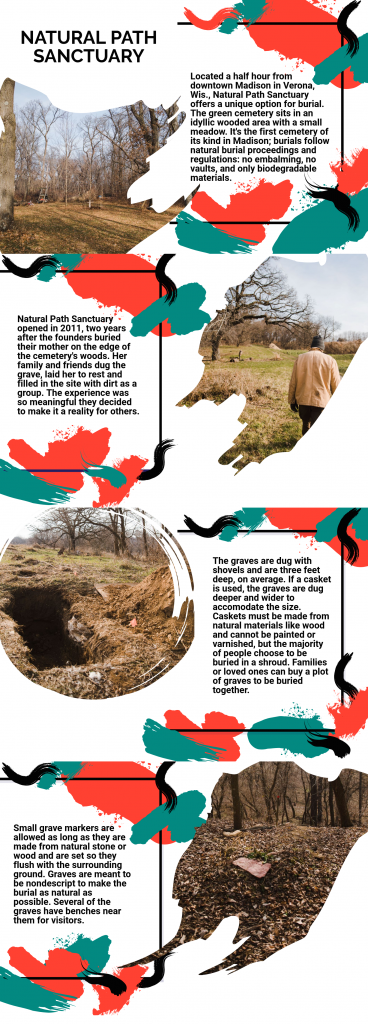
“My thought process is that if there’s something I can control, do something about it,” she says. “If I can’t, then [I] need to work on letting it go. To get caught in the middle of where you want things to be, it creates a whole bunch of chaos.”
If and when we decide to let go of our fears of death, we can find ourselves profoundly aware of the brevity of the time we have. That realization, Sheikh says, helps us “become more interested in the here and now: not what happened yesterday, not what’s going to happen in the future, but what is happening right now because life is only in the present.”
Sheikh cites a story where the philosopher Plato was asked how people should live their lives. Plato supposedly replied, “Practice dying.” Plato’s response is the premise behind Sheikh’s work on death and dying: He helps people imagine their own deaths so they are better suited to live their lives until it comes.
“I would take the people to the experience in their imagination of their own death: dying, watching their own funeral and blah, blah, blah. The whole thing,” Sheikh says. The exercise of imagining the process of dying in vivid detail brings people closer to that reality.
“If you don’t think about death, then you think that, at some level, you’re going to be on this Earth forever. Then you don’t see as much importance,” Sheikh says. “Once you realize that this is a limited time that you have, then you are more motivated to use it well.”
Individual conversations about death help to break down the stigma around the topic, but the mentality doesn’t necessarily change unless there is action involved.
In western Wisconsin, La Crosse has emerged as a leader in facilitating discussions of death in the state. Gundersen Health System, one of the main health care providers in the area, led the charge to ensure La Crosse residents not only have the vocabulary to discuss the end of their lives, but also have a plan for the inevitable.
Since the mid-1980s, medical professionals in La Crosse have talked with patients about death, and they continue to help patients plan for it when they come in for regular visits. The movement started when Bud Hammes, a medical ethicist and the executive director of the Respecting Choices program, joined Gundersen to develop a curriculum for medical students to follow when faced with moral challenges as doctors.
Hammes, who has Ph.D. in philosophy, shadowed residents and the doctors training them and discovered they were frequently in situations where patients weren’t able to indicate their end-of-life wishes, and families were unsure because they never discussed the patients’ wishes. The lack of communication led to uncertainty. Doctors and residents alike knew they could do more, but questioned if they should do more: Would continuing life-saving measures actually make the patient suffer more?
“This looked like a terrible situation, but it looked as if it was simply the way things work,” Hammes said.
The “defining moment” came in 1986, Hammes says, when he was asked to speak with three families all facing the same decision. Their loved ones were elderly, had kidney failure and suffered strokes from which they would never recover or regain consciousness, and were being kept alive by dialysis and other life support measures.
“The families were all filled with anxiety and uncertainty about what to do,” Hammes says. “Each of the families had the same response to the most important question, which is: If your mom or dad knew everything that you know right now, what would your mom or dad ask us to do? And they all said, ‘We don’t know.’”
Hammes says the uncertainty was emotionally devastating for families, and it would likely never go away.
“They would always wonder, ‘did I end my dad or mom’s life before I should have?’ Or if they kept the treatment going, ‘did I keep them going too long and put them through suffering they didn’t want?’ It didn’t matter which decision they made, the moral distress of uncertainty was going to be there, and it was a horrible thing,” Hammes says.
The three cases he worked on motivated him. Hammes received support from the kidney specialist and hospital administrator to create a program to engage patients with kidney failure and their support systems in reflective conversations. The conversations revealed what the patients valued and led to documentation of their wishes, which their support systems were aware of.
The program affected 60 patients, and within two years of its inception, Hammes says the moral quandaries faced at the end-of-life essentially disappeared.
Medical leaders decided to take the successful program and replicate it in the community. They engaged community leaders and institutions, including the local religious communities, public library and county bar association.
The program affected 60 patients, and within two years of its inception, Hammes says the moral quandaries faced at the end-of-life essentially disappeared.
Medical leaders decided to take the successful program and replicate it in the community. They engaged community leaders and institutions, including the local religious communities, public library and county bar association.
The goal was for individuals to complete “good” advance care planning, but by “good,” Hammes did not mean the technical completion of the document — putting down phone numbers and signing off on the list of wishes.
“We had to do more than just increase the number of patients completing advance directive documents,” Hammes says. “We had to have them truly reflect on what was important and understand that and then sit down and have productive conversation with their family so their family both understood and supported whatever that was. Even if they didn’t necessarily agree.”
That’s the essence of the La Crosse program piloted by Hammes — to create and execute a community-wide approach to make high-quality advance care planning part of the norm of regular care.
“It’s an opportunity to prepare,” Riley says. “You take trips and you go out of the country or you just go on vacation, you have to pack a bag. You’re preparing for that. So why not prepare for that final stage in your life when you have an opportunity to do so?”
Today, more than 96 percent of La Crosse residents have advance directives, compared to just under 37 percent of adults in the country. The program began with every adult in the La Crosse health care systems, but it has spread to 23 health care systems in the state.
Research shows that patients who completed advance directives received care that almost entirely aligned with their wishes. And, those with advance directives save money. La Crosse patients spend approximately $6,500 less in their last six months of life than the national average.
“We wanted to have a culture in our community of high quality and thoughtful discussions,” Hammes says. “We wanted to make sure we had a place to keep this information where it could be found. And we wanted to make sure that our doctors then use this information in the most thoughtful way when decisions were made about that person. And we largely achieved that.”
Death doulas, also known as death or end-of-life midwives, support the dying and assist the family with the process of a loved one’s departure.
Karen Reppen, a death awareness educator and end-of-life doula, engages people in discussions on aging, illness, death and grief.
“I try to get people to really think about what their own core beliefs are, and to then excavate where those beliefs come from,” Reppen says.
Reppen retired from her role as the public relations and communications director for two hospices, but she continues to volunteer in hospice in addition to her role as an end-of-life doula. End-of-life doulas provide support, resources and education to the dying and their loved ones. Reppen is one of the directors of the board of the National End-of-Life Doula Alliance, holds a grief support specialist certificate from UW-Madison and an End of Life Doula professional certificate from the University of Vermont.
“As a doula, a lot of it is just … being there at the end when people are saying, ‘What’s going to happen when they die? I’m terrified; I’ve never been with somebody that’s died before,’” Reppen says. “So just holding space for people, offering a caring presence.”
Reppen retired from her role as the public relations and communications director for two hospices, but she continues to volunteer in hospice in addition to her role as an end-of-life doula. End-of-life doulas provide support, resources and education to the dying and their loved ones. Reppen is one of the directors of the board of the National End-of-Life Doula Alliance, holds a grief support specialist certificate from UW-Madison and an End of Life Doula professional certificate from the University of Vermont.
Her support takes shape in a variety of ways, such as respite and companionship. She also focuses on the more logistical aspects of dying, like advance care planning or finding someone to take the dog for a walk. Reppen has also helped families decide on funeral plans or which cremation service to use.
Like Reppen, Riley assists with funeral and burial planning. But she also wants to ensure people have the proper paperwork and have communicated their wishes to their families. She trained in Ann Arbor, Michigan, to be a death doula and has been building a business to help families and couples with advance planning and preparedness.
Riley became an end-of-life doula because she wanted to offer support to the dying and their loved ones to make the transition from life to death as smooth as possible. As a nurse, Riley saw an opportunity to have a more intimate relationship with her patients.
Riley wants to work with families well before a loved one begins the transition from life to death. She wants to help ease the burden for people, whether it’s logistical planning or having death-related conversations.
“Sometimes it’s a little more helpful when someone else is helping guide the conversation with something you want to say but you don’t know how to say it.”
Riley also wants to do follow-ups with families after a loved one has died, whether it’s a meeting or phone call after a week, one month or six months, to check-in and help them through their grief process.
Reppen’s goal is to provide support for people as they explore their wants and needs at the end of life or while planning for their deaths. “It’s really just providing a caring presence and understanding that none of us really know what’s going to happen next,” Reppen says.
But Reppen has not always been open to talking about death. She says she was “the most death-phobic person on the planet” 20 years ago, and she struggled to be by her father’s side when he was dying.
“I’d like to think of myself as being a kind, compassionate, loving, generous person, and to be unable to be with someone who was in any way suffering, to me it was just, it was horrible,” Reppen says.
Reppen began exploring death and dying and analyzed why she was afraid. She learned of careers in death-focused work and took a job in hospice while her father was dying. Working there altered her thoughts and emotions surrounding death because her colleagues deeply understood the process of death.
“I was around people who knew the realities of death, and they knew how to educate people and care for people in a way that provided comfort, rather than terror,” Reppen says.
The experience of being with someone dying is unlike anything else, she adds. The transition from life to death is dramatic and hard to imagine.
“One minute, even if they’re not responsive, even if you haven’t talked to somebody for days, and they can’t speak, … they’re still alive; they’re still warm; there’s still some energy going, flowing through their body,” Reppen says.
In their last moments, “they take that last exhale, and it’s one of the most amazing things in the world. All of a sudden … and it’s deep,” Reppen says while taking a long, belly-filling breath. “Life is still happening when we exhale, but that last exhale, it takes all the energy.”
Reppen encourages people to face their grief. “A lot people look at grief as being sort of a pathological, unwanted guest and something that you want to get over, something that you don’t want to do,” she says.
But Reppen views grief differently — she sees it as a skill. Rather than shying away from our grief, Reppen says to pay attention to it — grief is there for a reason.
“Recognize grief as a measure of your love of life, your involvement with somebody else.”
Reppen acknowledges that in the U.S., people do not like talking about death, the afterlife and grief. But in other cultures, death is less of a taboo and more of a celebrated part of life.
Carolyn Kallenborn, the Jane Rafferty Thiele professor in human ecology at UW-Madison, teaches textile and fashion design classes and also produced “La Vida y los Muertos,” a documentary film about Dia de los Muertos, or the Day of the Dead. In the film, Kallenborn aims to show people the true experience of the Mexican holiday.
Dia de los Muertos is celebrated from Oct. 31 to Nov. 2 in Latin America, particularly in Mexico. During the holiday, families pay respects to their loved ones who have died and celebrate their ancestors with parties, decorations and activities. Families celebrate in the cemetery, often until the sun comes up.
“It’s really deep, heartfelt, … a very personal thing and really a reminder of our mortality, and remembering people that [have] left and our place in a continuum,” Kallenborn says. One of her friends described the day as a celebration because, “for some reason, the all-powerful one allows our dead loved ones to come back one day a year, so we throw them a party.” The holiday recognizes that death is a guaranteed aspect of the human experience and is part of a continuum from birth through childhood and adulthood.
Within Mexico, the events may differ from town to town. “When I went down there I visited a bunch of different towns to see how it varies from one place to another and which parts are the underlying principle that stays the same,” Kallenborn says.
The process of celebrating Dia de los Muertos can prove helpful to a family’s healing process following the death of a loved on. “Recognizing that we’re all human and we all go through these things, and this way of dealing with someone’s passing is actually a really profound, personal thing to do,” Kallenborn says.
Research shows that death is both resented and left unrecognized in the U.S. Western cultures suppress dying and conversations surrounding the end of life. But, in Mexico, there is a cultural interest in death characterized by less desire to control. The conversations about death in Mexico are also marked by a greater respect for elders and less of a youth culture as seen in the U.S., Kallenborn says.

“There’s just this [understanding] of like the stages of life being normal and that it’s all part of it,” Kallenborn says. “And then as you get older, you have these other experiences and those add into things. [Mexicans] have a deep appreciation for things that came before them and after them, and a sense of wanting to carry the energy of something that happened before into what you have now.”
Kallenborn advocates for the recognition of death as a natural process. In the U.S., “we just pretend everybody is just pretty and sleeping, that somehow that’s what it is, and it just isn’t,” Kallenborn says.
“As a whole in the states, people are very afraid of it,” Kallenborn says. “They don’t want to talk about it. And I think as a whole [with] things that are difficult, we think if we just don’t talk about them, they’re going to go away.”
“It doesn’t feel healthy to me; it doesn’t feel real,” she says. Kallenborn feels that by embracing conversations about the end of life, people can find healthier ways to deal with the fear.
In the basement of a nondescript building on the west side of Milwaukee, eight people gathered in The Womb Room. Typically used for pre- and post-natal exercise classes and child care, the sprawling and peaceful basement was stocked with baby supplies, yoga gear and a bountiful selection of toys.
But on a sunny Sunday afternoon in mid-November, the space wouldn’t be filled with expectant mothers or playful children. Rather, the eight adults would settle onto two couches and a few chairs and introduce themselves, while Riley cut into a vibrantly-frosted cake that read “Death Cafe MKE” in blue cursive letters.
The conversation flowed easily. Guests bonded over their one shared experience and discussed their fears of the uncertainty of death and letting go of one’s life, completing advance directives, and making pre- and post-death wishes known to family members. Over the span of two hours, one guest’s 2-year-old daughter played in the space, her mouth stained blue from the frosting. She was full of life and oblivious to the conversation at hand.
Riley led the death cafe and facilitated a conversation about the value of discussing death to alleviate our fear and misconceptions.
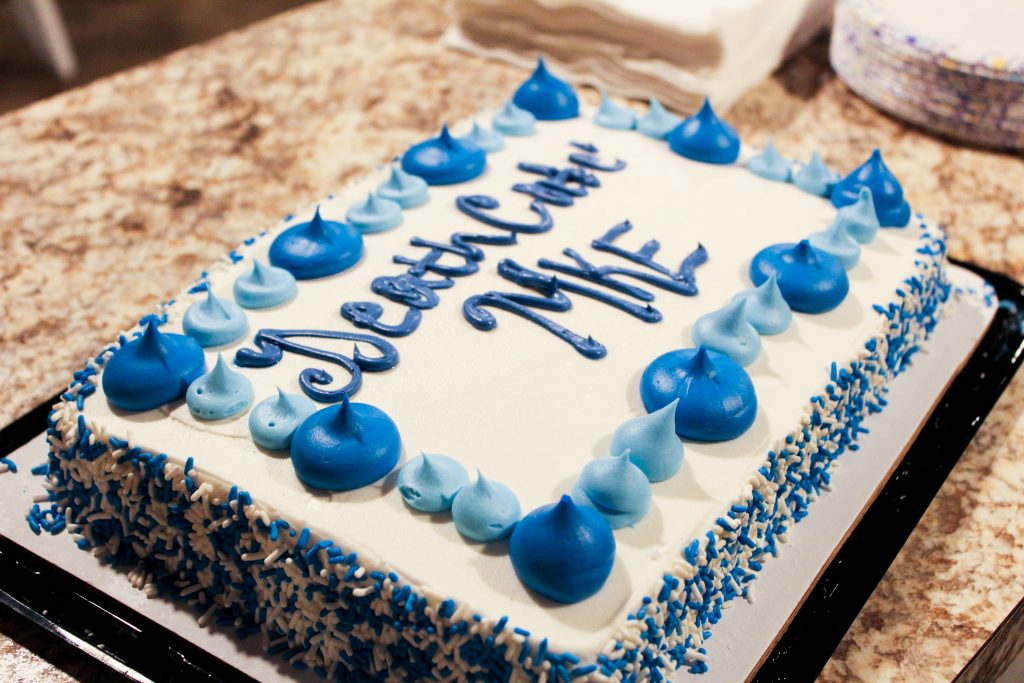
“We can’t normalize things that we don’t talk about,” she says.
For Riley, death was normalized by the loss of her mother, son and grandmother in a seven-year span. But she wants to normalize dying for others through her work with death cafe and death doula services.
It isn’t just death that has been normalized by her experiences — living was, too.
“The life that has been created because of the loss has been amazing,” Riley says. “It opened my eyes to really, truly embracing life and not being limited by what I think might happen.”
With two growing businesses, Dignity with Departure, her end-of-life doula service, and Redefining Life Services, a nonprofit that provides well-being education and resources to underserved communities, Riley has a lot of future plans.
She works every day to be present and mindful for herself and her grandson, Jevontese’s son, who she’s raising. She and 3-year-old Jevontese Jr. do yoga together, and Riley sees her son’s spirit live on in him.
“Death is going to happen. We just don’t know when and how,” Riley says. “I live for today. Today is today. Today is all I have. I don’t get fixated on how to plan tomorrow, next week, next month … I embrace today for what it is because good, bad or indifferent, that’s all I’ve got.”
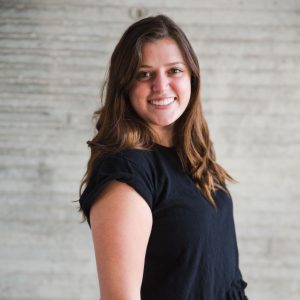
Sofia, a lead writer, is a senior studying strategic communication with certificates in gender and women's studies and digital studies. Upon graduation, Sofia hopes to help tech companies produce editorial content.
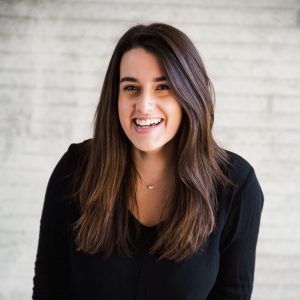
Cathleen is one of the publication's lead writers and a second-year graduate student studying journalism with a focus in community and civic engagement reporting.
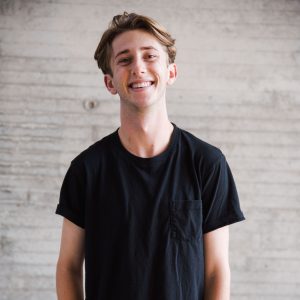
Logan, lead writer, is a senior studying reporting and strategic communication with a certificate in digital studies. When he’s not spending hours with his fingers on his keyboard, you can find him on twitter @ loganrude_.